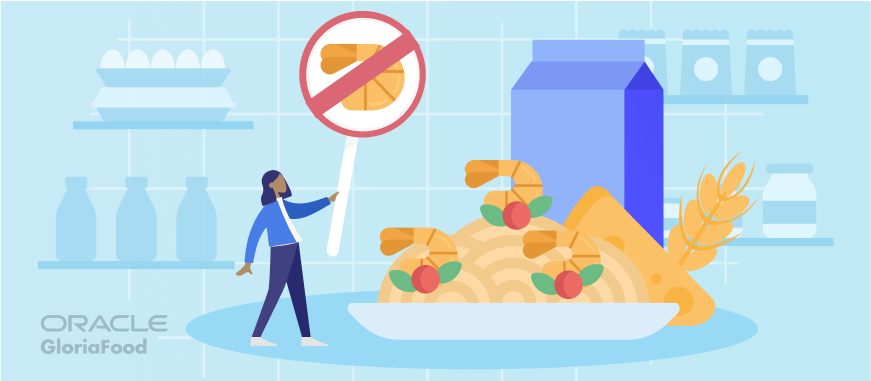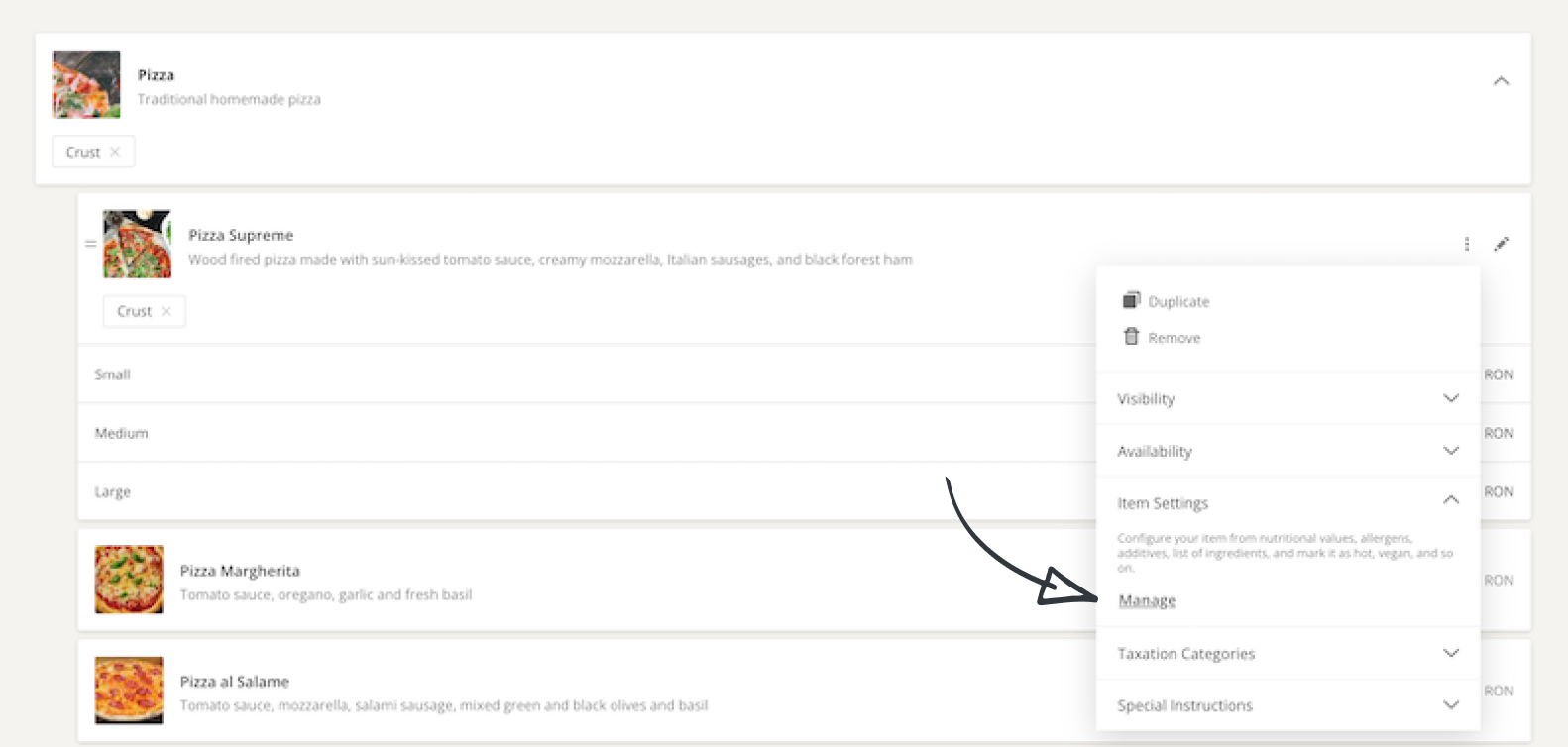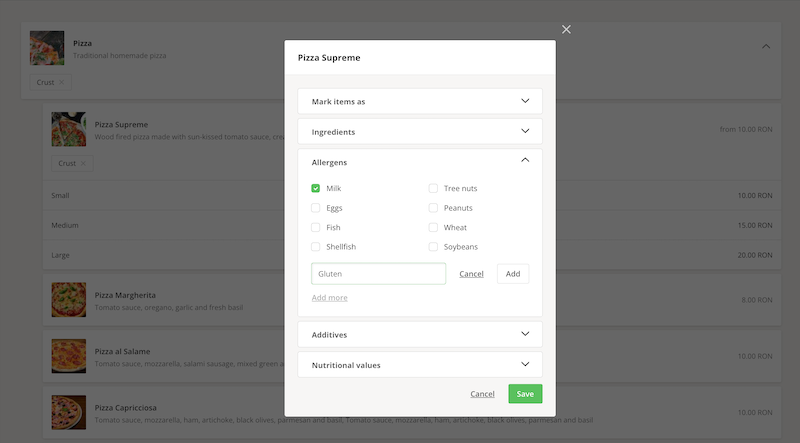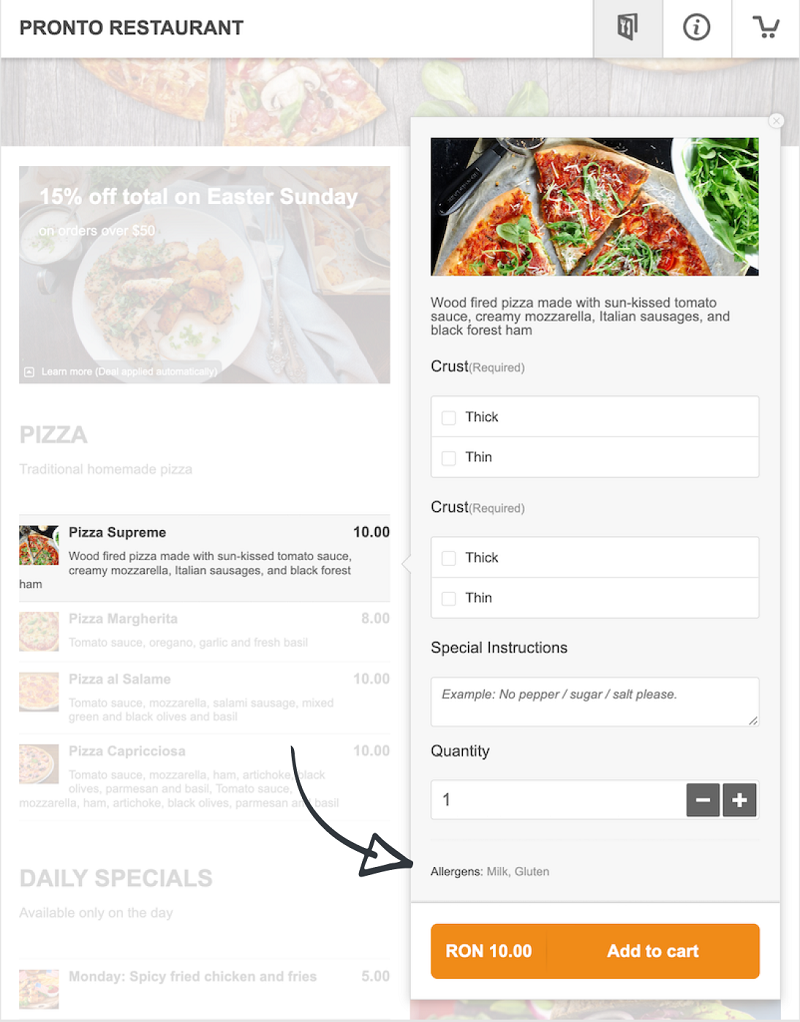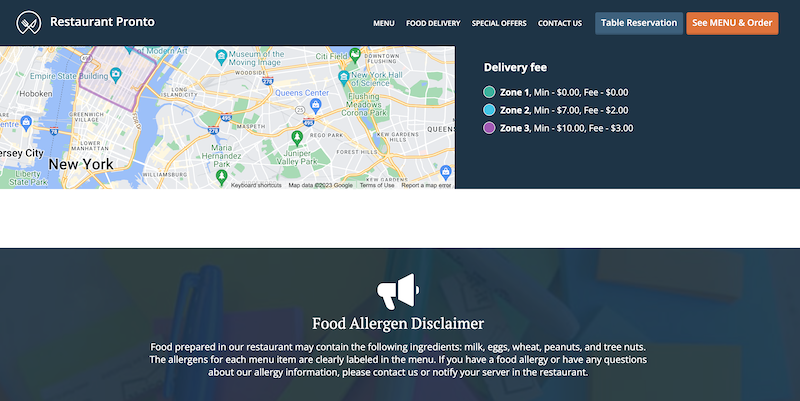If you’ve ever had an allergic reaction, you know how unpleasant it is. Now, put yourself in the shoes of your customers suffering from food allergies, and you’ll understand the importance of supplementing your menu with allergen information.
We teach you how easy it is to do that with GloriaFood and how you can ensure food allergy restaurant responsibility across the board.
What Is Allergen Information?
Allergens produce an abnormal, intense immune response in which your immune system perceives otherwise harmless substances as a threat. That response is called an allergy, and it can have symptoms ranging from sneezing, a runny nose, or itching, to more serious ones like shortness of breath.
Allergen information consists of clearly labeling any potential allergens that a product might contain, to avoid people getting sick.
Why Is Allergen Information Important?
To ensure your customers’ safety, you need to disclose all menu item allergens clearly and visibly.
Not only will your customers appreciate the information, and know they can rely on you to keep them safe, but you also avoid any potential liability in case anything goes wrong.
What Allergens Should Be Declared on a Menu?
To improve your menu with allergen information, you need to research the most common food allergens. According to the FDA, these are:
- Milk
- Eggs
- Fish
- Crustacean shellfish
- Tree nuts
- Peanuts
- Wheat
- Soybeans
- Sesame
However, the food allergens list doesn’t stop here. There are more than 160 foods that can cause allergies, such as gluten or color and food additives.
How Do You Mention Allergens on a Menu?
The easiest and clearest way to add allergen information on menus is to spell them out as such so they’re impossible to miss. Icons might not be familiar to everybody, but the actual ingredient will be.
If you use the online menu builder from GloriaFood, improving your menu with allergen information is a breeze.
Use our simple drag-and-drop interface to choose from a set list of the most common allergens or add your own if you can’t find it on the list. Let’s look at a practical example!
Say we’re trying to list the allergens for our Pizza Supreme. We have to go to Setup -> Menu setup, click on the three dots next to the item, then on ‘Item Settings,’ and ‘Manage.’
This will open up a pop-up. Go to ‘Allergens’ and check the desired ones, in this case, milk. But let’s say this pizza also contains gluten and we want to add that as an allergen too. Click on ‘Add more’ and enter the allergen, then click ‘Save’ and check it.
Once you’ve added all the allergens, here’s how customers will see your restaurant allergen information on the menu:
Now you’re all set to inform customers of your menu allergens and leave no room for doubt.
It’s worth mentioning that if you want your dine-in customers to be informed of menu allergens as well, you can use the same menu for dine-in by turning it into a QR code. Here’s how:
How to Successfully Practice Food Allergy Restaurant Responsibility
Research local food allergy laws
Food allergy laws vary from country to country and from state to state. To ensure you abide by all local rules and regulations, do thorough research before you set up your menu.
The Food Allergy Research and Resource Program at the University of Nebraska-Lincoln created this handy international regulatory chart that features information on food allergen labeling laws all over the world.
You can select the allergen you want to check, and the map and table will show you its status in your area.
Participate in food allergy training for restaurants
Your job as a restaurant manager or owner is to ensure your staff is trained and equipped to deal with food allergens.
Look for training courses in your area or online materials and certifications that can help you maintain flawless food safety and health standard at your restaurant.
For a comprehensive understanding of allergens and how they interweave with dietary needs, consulting qualified professionals is key.
Registered dietitians offer virtual nutrition counseling tailored to individuals seeking personalized guidance on allergen management and general nutrition.
Add a restaurant allergy disclaimer on your website
Customers will feel safer if they’re aware of your restaurant’s food allergy policy. And what better place for an allergen disclaimer notice than on your restaurant website?
The restaurant website builder from GloriaFood comes with a built-in announcement section that you can personalize with information regarding menu allergens.
Here is an example of a food allergy disclaimer for restaurants that you can use on your website:
Follow this video tutorial to get an SEO and sales-optimized website for your restaurant in minutes:
Abide by a strict allergy protocol for restaurants
To ensure things run smoothly and you don’t jeopardize your customers’ safety put together a written protocol that includes:
- Clear allergy information that both staff and customers are aware of;
- Common questions staff might receive about allergens and how to respond to them;
- Clearly labeled cookware and utensils for guests with allergies;
- Dedicated areas and equipment for cooking allergen-free dishes;
- At least one back-of-house and one front-of-house person who are heavily trained to spot and predict allergen mistakes that could lead to serious incidents.
What should you do if a guest has an allergic reaction in the restaurant?
Sometimes, no matter how hard you try, accidents still happen. In that case, it’s better to be prepared to act fast and stop the issue from escalating.
If a patron starts exhibiting signs of an allergic reaction, do the following:
- Do not move the person; put them in a comfortable position and call 911 (or the emergency number in your country);
- Stay with the person and keep them comfortable until the ambulance arrives;
- If they have an adrenaline auto-injector, locate and use it;
- If there is no pulse or breathing, commence CPR.
Wrap-up
One of the simplest ways to ensure customers can dine at your restaurant without fearing they might get an allergic reaction is to supplement your menu with allergen information.
That, coupled with an allergen disclaimer notice on your restaurant website and a detailed allergy protocol will make you one of the most appreciated and trusted restaurants in the neighborhood.
